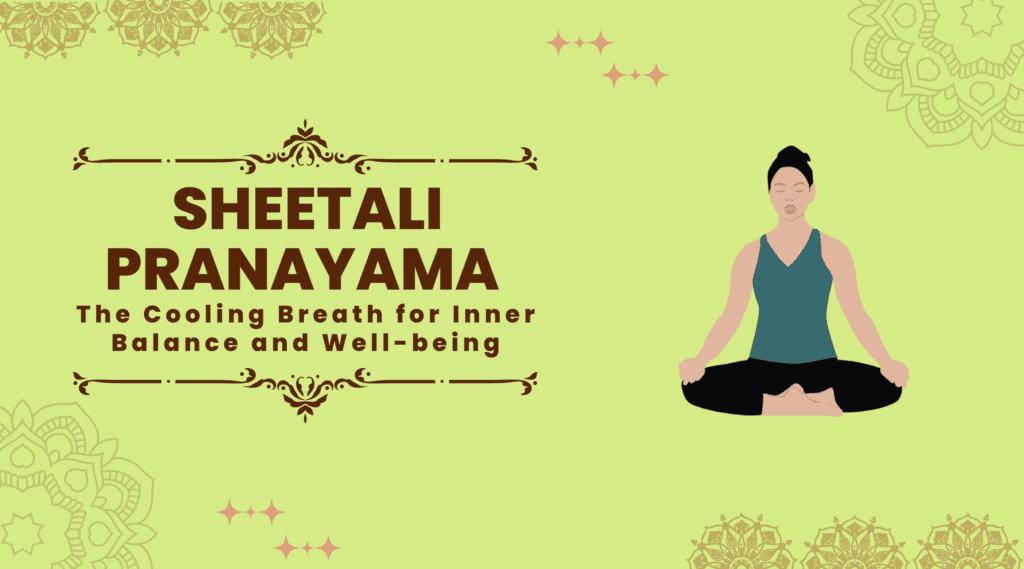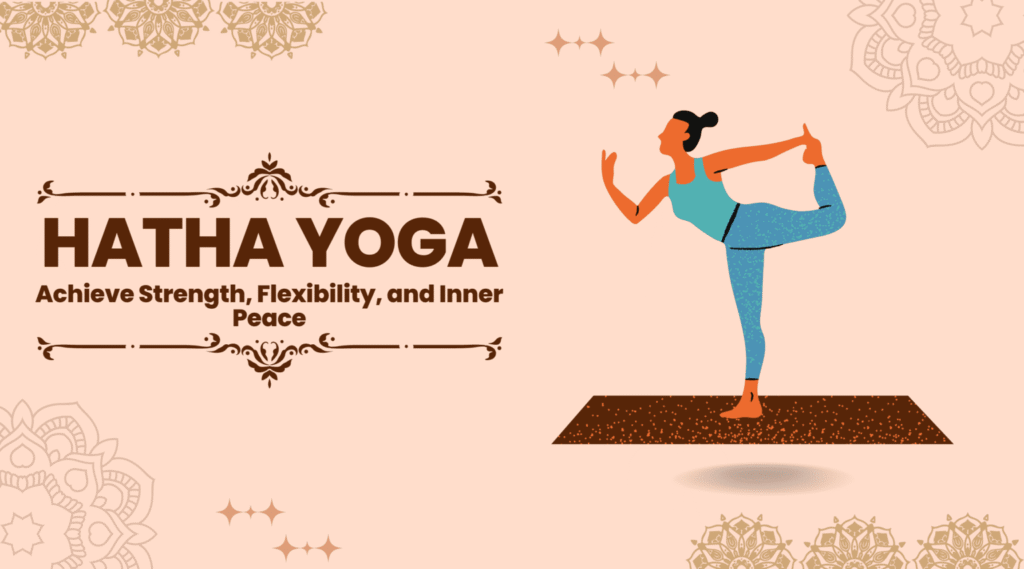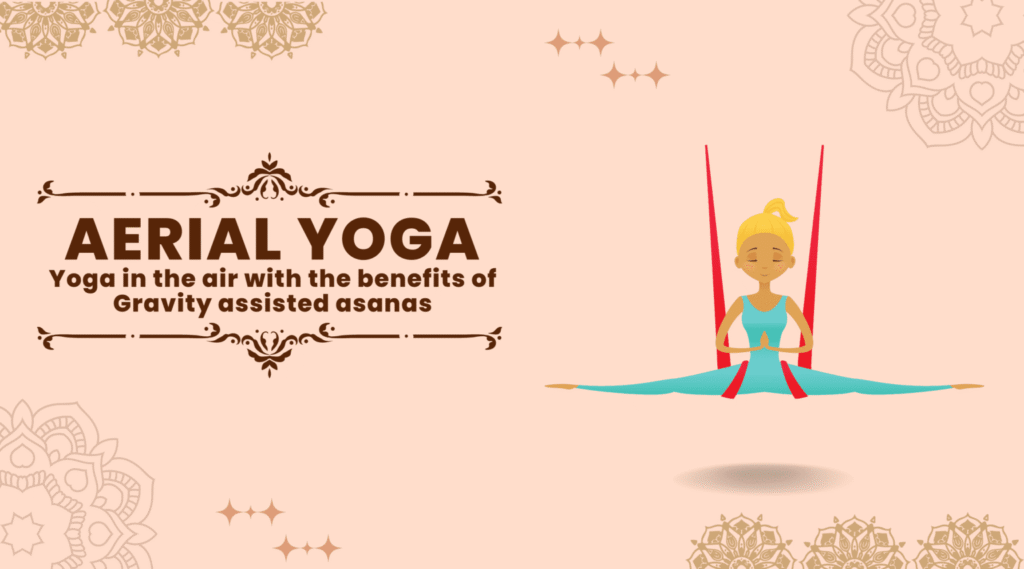
Introduction
Sheetali pranayama is a yoga breathing technique that helps to cool and calm down the body and mind. It is also known as the “cooling breath” because of the sound produced while inhaling through the mouth.
In addition to its use in yoga, Shitali pranayama is also a useful technique in Ayurveda, a traditional Indian system of medicine. Ayurvedic practitioners use Shitali pranayama as a way to balance the Pitta dosha, because Pitta dosha is associated with heat and fire in the body.
In Sheetali Pranayama, the practitioners consciously regulate the breath in order to activate the body’s natural cooling response. Because of its natural cooling effect, it is an excellent practice for hot climates, high stress situations as well as to alleviate heat-related discomfort.
In this article, we will explore the technique and benefits of Sheetali Pranayama, as well as provide step-by-step instructions on how to practise it effectively. Whether you are seeking relief from heat, looking to calm a restless mind, or simply want to enhance your overall well-being, Sheetali Pranayama offers a refreshing and accessible approach to harnessing the power of the breath.
Suggested: Best Yoga Retreats And Yoga Teacher Training In Rishikesh
History of Sheetali Pranayama
The word “sheetali” comes from the Sanskrit word “sheet” which means cool or soothing, and “ali” which means tongue. This pranayama involves rolling the tongue into a tube shape and inhaling air through it.
However, if you are unable to roll your tongue, you can still practise Sitali pranayama by using a similar technique called “Sheetkari” where you inhale through clenched teeth instead of the tongue. Yogis in ancient India developed this breathing technique as a part of various breathing techniques to improve physical and mental health.
Several classical yoga texts also mention Sheetali pranayama, such as the Hatha Yoga Pradipika and the Gheranda Samhita. These texts describe the technique as a cooling breath that can reduce body heat and purify the blood.
The other cultures and traditions also adopted the practice of Sheetali pranayama over time. For example, in Tibet, it is known as Thamdrol, and is used as a way to regulate body temperature and reduce fever.
Today, Sheetali pranayama remains a popular and effective pranayama practice. This pranayama is often a part of yoga classes and is recommended for individuals who experience hot flashes, high blood pressure, stress, anxiety, or insomnia.
How Sheetali Pranayama is different from Sitkari Pranayama
There is another pranayama named Sitkari Pranayama. Sometimes, Sitkari pranayama is mistaken for Sheetali Pranayama.
However, Sheetali and Sitkari Pranayama are two different types of cooling breath exercises in yoga. They both give similar benefits but using different techniques. The primary difference between these two pranayama techniques is the way they are performed and the mouth positioning.
Sheetali Pranayama involves breathing through a rolled tongue, creating a tube-like structure, and inhaling air slowly through the mouth. The air passes over the tongue, which cools the air, and then enters the lungs. After inhalation, the breath is held for a few seconds, and then exhaled through the nose.
On the other hand, Sitkari Pranayama involves inhaling air through the mouth, keeping the teeth together, and the tongue extended out of the mouth with a slight hissing sound. The air is drawn over the tongue, creating a cooling sensation, and then the breath is held for a few seconds before exhaling through the nose.
Both Sheetali and Sitkari pranayama are effective cooling techniques, which can help reduce body temperature, calm the mind, and soothe the nervous system. These pranayama techniques can also help reduce stress, anxiety, and anger. However, Sitali pranayama is more suitable for people who can roll their tongue, while Sheetkari pranayama can be practised by anyone who can keep their teeth together and extend their tongue out.
Benefits of Sheetali pranayama
Generally, Sitali Pranayama or the Cooling Breath offers a range of physical, mental, and emotional benefits. By practising this simple yet powerful breathing technique, you can experience the following advantages:
1. Cooling Effect:
As the name suggests, Sheetali Pranayama has a cooling effect on the body, making it an excellent practice for hot climates or during times of excessive heat. It helps regulate body temperature and can provide relief from hot flashes, heatstroke, and general discomfort caused by high temperatures.
2. Calming and Relaxation:
Sheetali Pranayama activates the parasympathetic nervous system, promoting a sense of calm and relaxation. It can be an effective tool for reducing stress, anxiety, and tension, helping you find inner peace and tranquillity.
3. Mental Clarity and Focus:
The practice of Sheetali Pranayama helps to clear the mind and enhance mental clarity. It can improve concentration, memory, and focus, making it beneficial for students, professionals, and anyone seeking mental sharpness.
4. Stress and Anger Management:
By slowing down the breath and activating the body’s relaxation response, Sheetali Pranayama can help reduce stress levels and manage anger. It provides a natural and accessible way to release pent-up emotions and find a state of emotional balance.
5. Digestive Health:
Sheetali Pranayama has a positive impact on the digestive system. The cooling breath stimulates the digestive fire (agni) and can alleviate digestive disorders such as acidity, indigestion, and inflammation. It also promotes efficient nutrient absorption and helps maintain a healthy digestive tract.
6. Blood Pressure Regulation:
The practice of Sheetali Pranayama can help regulate blood pressure, making it beneficial for individuals with hypertension or high blood pressure. The slow, deep breaths promote relaxation and reduce stress, contributing to better cardiovascular health.
7. Enhanced Lung Function:
Sheetali Pranayama expands lung capacity and improves respiratory function. Hence, it can be especially beneficial for those with respiratory problems such as asthma or allergies. Regular practice strengthens the respiratory muscles and increases oxygen supply to the body.
8. Balancing Energy:
Sheetali Pranayama helps balance the body’s energy (prana) by harmonizing the flow of vital life force. It creates a sense of equilibrium between the mind and body, promoting overall well-being and vitality.
9. Emotional Stability:
The cooling effect of Sheetali Pranayama can help soothe and stabilize emotions. It can be a valuable practice for managing mood swings, irritability, and emotional imbalances, fostering a greater sense of emotional stability and resilience.
10. Improved Sleep Quality:
The calming nature of Sheetali Pranayama can aid in improving sleep quality. By reducing stress and promoting relaxation, it helps to alleviate insomnia, sleep disturbances, and promotes a restful night’s sleep.
Incorporating Sheetali Pranayama into your regular yoga or meditation practice can provide you with these incredible benefits, helping you achieve physical well-being, mental clarity, and emotional balance. Embrace the Cooling Breath and experience the transformative power of this ancient yogic technique.
Steps to Practise Sheetali Pranayama
Here are the steps to practise cooling breath:
1. Sit in a comfortable cross-legged position with your back straight, shoulders relaxed, and hands resting on your knees.
2. Close your eyes and take a few deep breaths through your nose to relax your body and mind.
3. Roll your tongue into a tube-like shape by curling the edges towards the centre of the tongue. If you cannot roll your tongue, simply make a small “o” shape with your lips.
4. Inhale slowly and deeply through your mouth, drawing the air in through the rolled tongue, and feel the cooling sensation of the breath as it passes over your tongue and into your lungs.
5. After inhaling, close your mouth and hold your breath for a few seconds, focusing on the cooling sensation in your throat and chest.
6. Exhale slowly and deeply through your nose, releasing the breath slowly and evenly.
7. Repeat the cycle of inhaling through the rolled tongue, holding the breath, and exhaling through the nose for five to ten rounds.
After completing the rounds, relax and observe the effects of the practice on your body and mind.
Cautions while practising sheetali Pranayama
1. Avoid practising Sheetali pranayama if you have a cold or respiratory infection.
2. If you experience any discomfort while practising this pranayama, stop practising this pranayama and try a different breathing technique.
3. Always practise under the guidance of a trained yoga teacher, especially if you are new to pranayama or have any health concerns.
Conclusion
Cooling breath is a simple yet powerful breathing technique that can help to calm and cool the body and mind, and has a range of potential health benefits. Whether you are seeking a cooling effect for the body, calming of the mind, or emotional stability, Sheetali Pranayama can be a valuable addition to your daily routine.
Its ability to regulate body temperature, induce relaxation, improve focus, and enhance lung function makes it a versatile practice suitable for people of all ages and backgrounds.
By incorporating Sheetali Pranayama into your yoga or meditation practice, you can experience a greater sense of balance, tranquillity, and overall vitality. Embrace the cooling breath, and let it guide you towards a state of inner calm, clarity, and rejuvenation.
You Can Also Read


